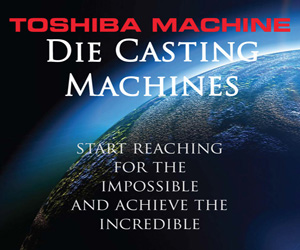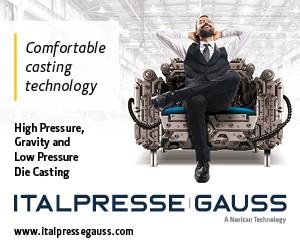Developing a product for die casting is similar to any other manufacturing process. However, the die casting process offers distinct product advantages and cost reductions that require a different approach to product development.
This die casting product development approach should be applied to new products and when an existing product is being converted from another manufacturing process. When a new design is started, the designer must disassociate the design constraints from the materials and processes traditionally employed.
Three Principles of Die Casting Design
Three principles are helpful:
- Think function, before traditional form.
- Performance must be sufficient, not equal.
- Match material properties to performance specifications.
Let’s take a closer look at the three principals mentioned above:
Function Before Traditional Form
In many cases form does not reflect function, but is instead determined by the traditional material and process employed. Therefore, it is essential to think of the function that the component is to perform, and disregard the traditional or previous process form.
The small pulleys shown here require the following features regardless of the manufacturing process used:
- V-shaped groove for a belt
- Assembly onto shaft with flat to depth
- Secure onto the shaft flat
The screw machined design shown on the left requires that the v-shaped groove, shaft hole, and set screw hole be machined out of one inch diameter steel bar stock. In addition the set screw hole must be tapped. The die cast design allows the v-shaped groove, shaft hole, and the set screw hole to be as-cast greatly reducing expensive machining. In addition, a flat can be cast in the shaft hole allowing the die cast pulley to be quickly oriented onto the shaft flat, greatly reducing assembly time. Only one machining operation, tapping the as-cast set screw hole, is required on the die cast pulley.
Performance Must Be Sufficient, Not Equal
Components are often over-designed because the dimensions of structural features are governed by economics or manufacturing constraints, rather than design criteria. A die cast alternative must, of course, be designed to develop properties that clearly meet product standards. It is not necessarily required that a die casting match the performance of an existing over-designed component.
For example: The screw machined steel bar stock design is very heavy in the area around the threaded set screw hole, due to the fact that it is machined out of 1” diameter bar stock. The die cast design does not have the restraints of the 1” bar stock so material can be reduced in the area around the threaded set screw hole. The weight of the steel screw machined pulley is 2.88oz. The weight of the die cast pulley is 1.41oz, this is a 1.47oz or 49% weight reduction and a 61% material volume reduction. This reduction saves material and speeds solidification of the die casting increasing production speed.
In this application even with the reduced material, the pulley is more than strong enough to meet the design performance requirements. It should also be noted that the shaft hole goes all the way through the pulley further reducing material usage.
Match Material Properties to Performance Specifications
The material properties of steel bar stock are generally higher than the die casting alloys available; however, in this application even with material volume reductions the die casting alloy material properties meet and exceed the requirements of the design. For components that do require higher strength it is recommended to add ribs, gussets, and other strengthening design features before increasing wall thicknesses. While adding ribs and other strengthening features to a design it is often discovered that die casting alloys can meet performance specifications previously thought to be available only with high-strength materials.
Steps to Assess Materials and Manufacturing Processes
The following steps will help the designer to assess the optimum material and manufacturing process. The Manufacturing Economics section of this site also has information on economic assessment and compares die casting with alternate materials and processes, and is helpful in assessing economic constraints.
- State Objectives: Begin with concise, descriptive statement of product objectives.
- Review Product Constraints: The Working Environment section presents a guide to systematic assessment of the working environment.
- Configure for the Material/Process: During the preliminary design phase, it is important to configure the product for the material/process combination to be employed.
- Involve the Die Caster Early: The die caster should be involved in the product development by the time the program reaches the preliminary design phase.
- Verify the Design: When the preliminary design is complete, it is usually necessary to verify it by finite element analysis (FEA) or fabricating and testing prototypes.
- Produce and Test: The procurement and testing of production samples normally complete the product development process.
To further understand die casting, visit the Die Casting vs Other Processes section to learn more about how the advantages and disadvantages of die casting compare to other processes.








